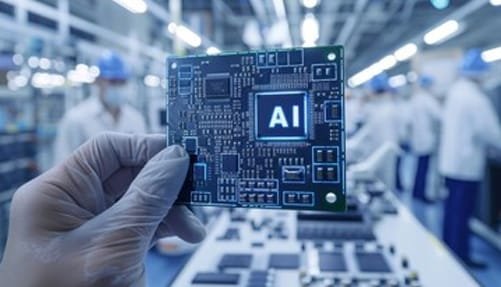Anurag Garg, founder of Everest PR, was keen to include ChatGPT into his agency’s operations when it first arrived in late 2021. With an 11-person team, Garg thought fast adoption of AI language technology would keep his company competitive. He urged his staff to use the program for everyday chores, including creating media pitches, compiling client story ideas, and transcribing meeting notes.
How Did AI Lead to Increased Stress and Tension?
However, AI caused workers to worry and feel tension rather than raise output. Many said their work took longer since they had to prepare thorough briefings, ChatGPT prompts, and the extra weight of checking its sometimes erroneous outputs. “There were far too many distractions. Garg, who splits his time between the United States and India, notes that the staff complained their jobs took twice the time as we were now expecting them to employ artificial intelligence capabilities.
This encounter mirrored a more general tendency. Originally meant to streamline processes, the introduction of artificial intelligence turned out to cause staff to burn out and feel overburdened. Garg himself felt the deluge of fresh artificial intelligence capabilities to be too much. Along with ChatGPT, he managed tasks using Zapier and did customer research using Perplexity.
Garg notes that “there is an explosion of artificial intelligence tools on the market, and no one tool solves several problems. “This made me continuously have to monitor several artificial intelligence tools to do jobs, which became more of a mess. Tracking which tool was meant to accomplish what became difficult, and I grew annoyed.
He pointed out that the never-ending stream of upgrades made it especially difficult. “There’s a superior app that will be accessible next week if I invest in a certain one today. I struggled to stay relevant as there was always a learning curve, and burnout resulted from this.
What Shift in Strategy Did They Make: Returning to Simplicity?

Garg chose to reverse his original mandate that everyone should use artificial intelligence for all activities after realizing the toll AI technologies were causing on his staff. Now, the organization mainly uses artificial intelligence for research needs, which has raised team morale noticeably. “This was our learning phase. The work is more doable now since we are not using too many artificial intelligence techniques. We have returned to all team members directly working on projects, and they feel more engaged. It is far better, he argues.
Why is There a Disconnect Between Expectations and Reality?
Recent studies mirror the difficulties Garg and his team have. While 96% of senior executives believe artificial intelligence tools will boost productivity, 77% of employees believe these tools have dropped their productivity and added to their workload. A survey including 2,500 knowledge workers across the U.S., U.K., Australia, and Canada indicated this. Moreover, 47% claimed they did not know how to satisfy the production standards set by their companies.
The discrepancy is apparent: 61% of respondents said adopting artificial intelligence at work could raise their likelihood of burnout—a statistic that jumps to 87% among those under 25. Separate polls revealed that 43% of respondents believe artificial intelligence will compromise their work-life balance.
How Does Multitasking with Multiple Tools Create Strain?
Even without artificial intelligence, workers already feel overburdened. Surveying 9,615 knowledge workers from nations including Australia, France, Germany, Japan, the U.K., and the United States, the study found that among those who use six to 15 distinct office apps, 15% missed messages and notifications due to the sheer amount of tools. For those using 16 or more, 23% said their attention span was shortened, and they felt less efficient from always hopping between applications.
“Using many apps requires additional time to learn them and switch between them; this lost time is painful because we are so sensitive to wasted time,” says a University of California, Los Angeles management expert.
What Are the Legal Perspectives on Navigating Burnout in a Tech-Driven Environment?
The legal profession is especially under pressure; a coach who specializes in assisting legal practitioners manage burnout has observed that many feel overburdened by the higher expectations of artificial intelligence-based productivity tools. Having seen a client caseload grow from 50 to 250 following the launch of a new technology platform, this person knows this challenge.
“The biggest thing I’m seeing is this continual competing demand to do more with less,” the coach says. “But businesses are not thinking about whether the tech and systems they are implementing provide an outcome that isn’t beneficial. Everything seems to be moving so fast. Maintaining current with things to gain knowledge in such a forward-looking field is an ongoing challenge.
Many lawyers suffer burnout that transcends the number of labor enabled by technology. “When we’re looking at burnout, it’s not just about the volume of the work we’re doing but also how we feel about the work and what we’re getting from it,” the coach notes.
“You could be worried about having ended up in an environment of high volume and low control when you originally wanted to interact personally with clients and change their lives.” The coach underlines how burnout can result from the anxiety of job uncertainty and the impression of being replaced by technology.
Why is There a Need for Support and Proper Training?
The Law Society of England and Wales notes the necessity of improved assistance for attorneys adjusting to modern technology such as artificial intelligence. The society’s head notes that although new technology and artificial intelligence can automate ordinary jobs, they can also generate more work for lawyers, not less. “Learning to use these technologies takes time; lawyers sometimes must change their working methods and undergo training. Many technologies were not first intended for the legal industry, which can complicate the shift.
How Can Organizations Find Balance in AI Utilization?
Emphasizing “deep work,” the founder and CEO of an online platform notes the “avalanche” of artificial intelligence technologies but underscores the need to employ them wisely. “Before these tools can even start to become productive elements in our lives, there is such a huge amount of filtering and learning that has to take place,” they explain.
Nonetheless, this person contends that artificial intelligence can be rather helpful for tiny businesses with constrained resources. “For start-ups to be able to do a lot more or for companies to be able to pay their team more, it is quite empowering.”
What Does the Future Hold: Navigating Work with AI?
The path to including artificial intelligence in the workplace is convoluted and full of opportunities and drawbacks. Finding a balance between using artificial intelligence’s capabilities and preserving the human element that makes work rewarding will be essential as companies and employees negotiate this new terrain.

